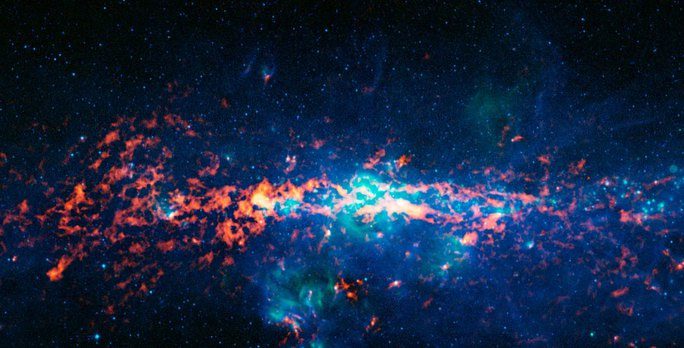American scientists have identified the largest alcohol molecules in the universe, which may play a crucial role in star nurseries.
The Science Alert humorously notes: These are not discarded bottles of wine left behind by careless astronauts. These are molecules “related” to alcohol molecules found on Earth, extremely small, but the ones just identified are the largest alcohol molecular structures among all those tiny molecules.

“Star nursery” Sagittarius B2 – (Photo: EUROPEAN SOUTHERN OBSERVATORY (ESO)).
The newly identified alcohol molecules exist in the form of propanol, including normal-propanol which was first discovered in a star-forming region, and iso-propanol (the main component in hand sanitizer) which had never been identified in any interstellar medium before.
According to a research team led by Dr. Rob Garrod from the University of Virginia, USA, these two newly discovered molecular forms will shed light on how celestial bodies such as comets and stars are formed.
While alcohol on Earth is associated with gatherings and drunkenness, these “extraterrestrial relatives” symbolize life.
They were found in a “birth room” of stars, a massive star-forming region known as Sagittarius B2 (Sgr B2). This area is located near the center of the Milky Way and close to Sagittarius A* (Sgr A*), the supermassive black hole around which our galaxy is structured.
This discovery is the result of 15 years of observations by ALMA, a powerful telescope located in Chile.
ALMA provides higher resolution and sensitivity, allowing researchers to identify molecules that were previously invisible. It can isolate the specific radiation frequencies emitted by each molecule in a busy region of space like Sgr B2.
Physicist Holger Müller from the University of Cologne, Germany, a member of the research team, stated: “In a source like Sgr B2, there are so many molecules contributing to the observed radiation that their spectra overlap, making it very difficult to classify their signatures and identify them individually.”
However, thanks to significant effort, they have succeeded.
The research team will continue to explore more interstellar molecules in Sgr B2 and investigate the mechanisms leading to star formation, which are certainly related to “cosmic alcohol.” As an organic compound, propanol is also suspected to play a role in the formation of planets and may even be linked to the emergence of life.
The study has been published in the journal Astronomy & Astrophysics.





















































